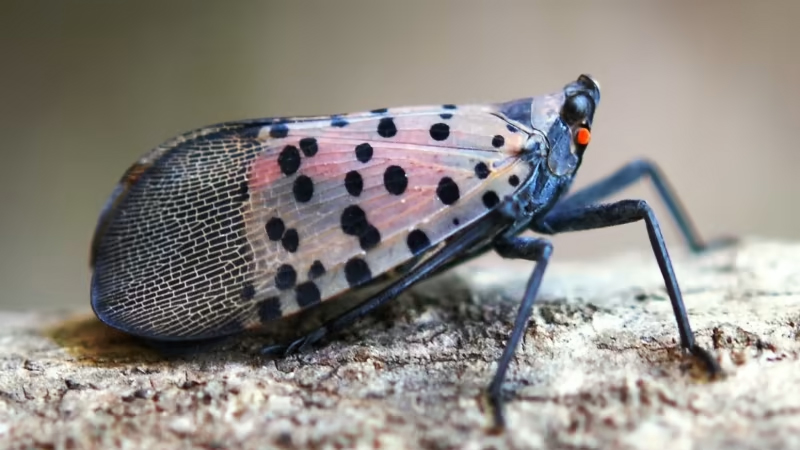Michigan residents were instructed to keep an eye for invasive spotted lanternfly

(Photo courtesy of Lawrence Barringer, Pennsylvania Department of Agriculture, Bugwood.org.)
Insect threatens agriculture, natural resources
Residents in Michigan are being asked to keep an eye out for the spotted lanternfly, an invasive species that threatens agriculture and natural resources.
The spotted lanternfly consumes over 70 different plant species, including grapes, apples, hops, and hardwood trees. It was found in southeastern Pennsylvania in 2014 and has since spread throughout the country. Connecticut, Delaware, Indiana, Maryland, Massachusetts, New Jersey, New York, North Carolina, Ohio, Pennsylvania, Virginia, and West Virginia have all confirmed infestations.
Although it has not been found in Michigan, the Michigan Department of Agriculture and Rural Development has confirmed five cases of dead spotted lanternflies in various locations across the state.
The dead insects were found in packaging materials or objects shipped from states with known infestations in those incidents.
“Our agricultural and natural resources are part of Michigan’s identity, and the spotted lanternfly has the potential to forever change that landscape,” said Robert Miller, MDARD’s invasive species prevention and response specialist within the Pesticide and Plant Pest Management Division.
“With its ability to wreak havoc on grapes, apples, hops, stone fruits and more, this could be devastating to Michigan’s farmers and the state’s food and agriculture industry.”
Why public awareness is vital
While spotted lanternflies are unable to fly long distances, they can lay eggs on almost any surface.
They have been noticed laying eggs on cars, trailers, firewood, outdoor furniture, and other items.
Check your vehicles, firewood, and other outdoor equipment for hitchhikers before leaving an infected area.
People and businesses receiving shipments from states where the lanternfly has been spotted should look for egg masses on goods and packing materials.
“With the current rate of spread, it is possible spotted lanternfly could reach Michigan at any time,” Miller added. “Public awareness and reporting are essential to early detection, which provides the opportunity to contain an infestation before it becomes a widespread problem.”


